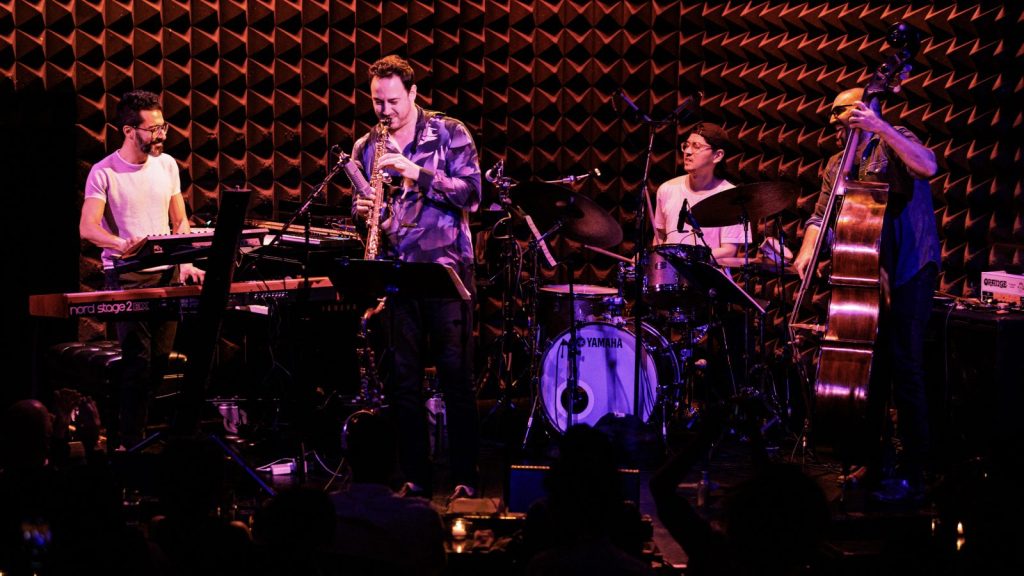Every year on April 30, jazz lovers around the world celebrate the genre’s power to bring cultures together. But while most people think of smoky bars in New Orleans or underground clubs in Paris, the Arab world has its own jazz trailblazers—artists who didn’t just adopt jazz but transformed it.
They brought the oud, the maqam, and stories of the region into a new musical conversation. Let’s take a look at trailblazers who shaped a sound that’s both rooted and revolutionary!
1. Rabih Abou-Khalil (Lebanon)
If there’s one artist who opened the jazz world’s ears to the oud, it’s Rabih Abou-Khalil. The Lebanese composer blends traditional Arabic music with the spontaneity of jazz and the structure of European classical music.
His 1992 album Blue Camel is still considered a masterpiece—a bold, rhythmically rich fusion that made the oud feel like it always belonged in a jazz ensemble.
2. Ziad Rahbani (Lebanon)
Ziad Rahbani doesn’t just play jazz—he injects it with humor, politics, and Beirut’s chaotic soul. The son of legendary singer Fairuz, Ziad carved his own path by mixing jazz, funk, and spoken Arabic in ways that felt deeply local and globally cool.
His music, like his cult-classic play “Bennesbeh Labokra Chou?,” turned everyday Lebanese frustrations into jazz-fueled theater.
3. Anouar Brahem (Tunisia)
Where Abou-Khalil leans into energy, Anouar Brahem pulls back. The Tunisian oud player creates soundscapes that feel more like poetry than performance.
His minimalist trio’s work on Le Pas du Chat Noir is haunting, weaving North African melodies with the sensitivity of chamber jazz. He proves that silence, when placed just right, can say everything.
4. Salah Ragab (Egypt)
Back in the 1960s, Salah Ragab made it his mission to bring big band jazz to Cairo—and he succeeded in style. A military commander with a passion for American jazz, he formed the Cairo Jazz Band and even collaborated with Sun Ra.
Ragab’s Egypt Strut is an electrifying mix of brass, rhythm, and Egyptian flair. Because of that, he was able to build a home for jazz in Egypt when few thought it was possible.
5. Dhafer Youssef (Tunisia)
From Tunisia, Dhafer Youssef brings a mystical touch to jazz. His music feels like a spiritual experience, layering haunting vocals with oud riffs and deep percussion.
Drawing from Sufi poetry and North African rhythms, Dhafer doesn’t just perform—he transports. Plus, his concerts often blur the line between meditation and music.
6. Malika Zarra (Morocco)
Malika Zarra adds a powerful female voice to the Arab jazz scene. Born in Morocco and based in New York, she merges traditional Berber and Gnawa sounds with jazz vocals and urban beats.
Her songs shift effortlessly between Arabic, French, and English, creating a cross-cultural rhythm that feels both personal and global.
7. Tarek Yamani (Lebanon)
Tarek Yamani brings Levantine music into the digital age. The Lebanese pianist reimagines traditional rhythms like dabke and samai through complex jazz harmonies and modern production.
His live performances feel like a jazz history lesson, flipped on its head and rewritten in the language of Beirut’s streets and New York’s jazz clubs.
Celebrating Arab Voices in Global Jazz
These artists added Arab flavor to jazz and helped reshape the genre entirely. From Cairo’s stages to Lebanon’s lofts, their music proves that jazz is still growing, curious, and open to voices that stretch its boundaries. On World Jazz Day, they remind us that rhythm has no borders—and that the Arab world has always known how to groove!
WE ALSO SAID: Don’t Miss…An Ode to Jazz Tunes: 5 Tracks from the Arabic Diaspora



